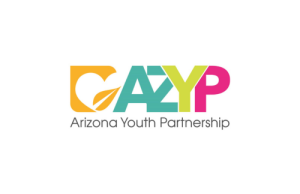
Mind Matters and Drug Free Communities Funding Case Study
Organization: Arizona Youth Partnership – Youth and Family Division (AZYP)
URL: Community Initiatives Division
Program Name: Mind Matters – an Intervention for Substance Use and Misuse Prevention
Funding: Governor’s Office of Youth Faith and Families, Drug Free Communities, and Arizona Health Care Cost Containment System (AHCCCS).
What Problem is Being Solved?
- Substance use/misuse prevention
- Ongoing stress
- Truancy prevention
- Violence prevention
Curricula Used: Mind Matters: Overcoming Adversity and Building Resilience
Curricula Benefits:
- Teaches practical coping skills.
- Promotes behavior change through providing coping skills.
- Can be utilized in a variety of settings (i.e. diversion programs, during school and aftercare programs)
- Program can be cross-trained with trauma competent training
- Coalition partners can be trained to implement Mind Matters since the program is designed to be facilitated by non-clinicians.
Target Audience: School aged youth at risk for onset of substance use or misuse (age of initiation: 12+)
Audience Demographics: Indigenous, Hispanic, Caucasian and smaller percentages of other racial demographics
70 – 80% federal free and reduced lunch statuses.
Class Size: 20-25
Program Setting:
- School facilities
- Aftercare programs
- Diversion programs
- Mostly rural locations
Location of Instruction: AZYP teaches Mind Matters in 13 of 15 Arizona counties.
Length of Instruction (# of Sessions and Hours per Session): 12 lessons at approximately 1 hour each
Instructors: AZYP Staff
How Was Cultural Adaptation Incorporated? No Specific Cultural Adaptations were made.
Many self-soothing techniques are taught throughout the curriculum. Participants can utilize whichever ones most align with their cultural beliefs and attitudes during reflection periods. Gender sensitive language is used and Culturally and Linguistically Appropriate Services (CLAS) standards are followed.
Student Journals: Each student is provided a journal. The teacher keeps the journals until the last class where they are given to the students.
Students are encouraged and enjoy using coloring pages in the journals and colored pencils are always available.
Incentives to Students: None
Observable Outcomes: Benefits to use of the curriculum:
- Trust with school increases.
- Classroom management is improved, and “decreases the volume.”
- Students help each other even when no one is watching.
- Youth are more engaged with one another.
- Reduced substance use and misuse amongst youth
- Stronger resiliency skills developed
Challenges: It can be a challenge to fit programming into busy school schedules however with strong school partnerships AZYP is able to serve the students.
Tips: Meet with the school staff to share the curriculum with them to gain their buy-in.
Link the issues the school is experiencing right now (school climate, classroom management, violence, etc.) with the benefits the students will experience both personally as well as academically.

